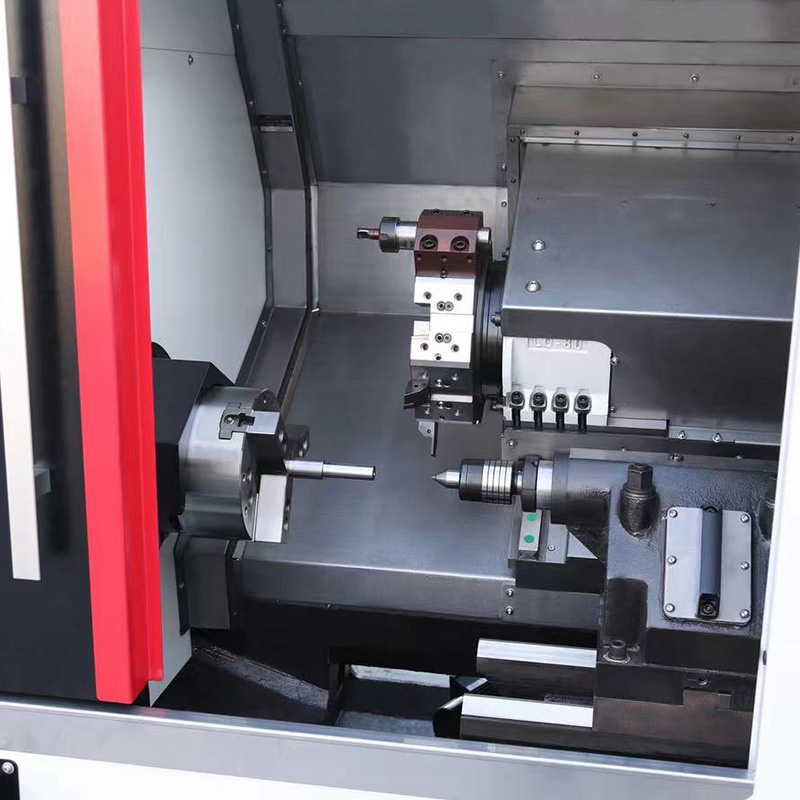CF32 Hydraulic Clamping CNC Polygon Turning Machine
Cat:Small Polygon Lathe
CF32 hydraulic clamping CNC polygon lathe is designed for milling small and medium-sized high-precision parts, which can mill square, octagonal, hexag...
See DetailsIn the realm of modern manufacturing, Computer Numerical Control (CNC) machines play a pivotal role, offering precision, efficiency, and versatility. Among these, the 3 Axis CNC Metal Milling Machine stands out as a cornerstone tool in various industries, from aerospace engineering to automotive production.
Advantages of 3 Axis CNC Metal Milling Machines
1. Precision and Accuracy:
One of the foremost advantages of 3 Axis CNC Metal Milling Machines is their unparalleled precision. These machines operate with microscopic accuracy, capable of executing intricate designs and complex geometries with minimal error margins. This level of precision ensures that each component produced meets exact specifications, crucial for industries where quality and consistency are paramount.
2. Versatility in Machining:
3 Axis CNC machines excel in their ability to handle a wide range of materials, including metals like aluminum, steel, and titanium. They can perform multiple operations such as drilling, contouring, and cutting with high efficiency, making them indispensable in both prototyping and large-scale production environments.
3. Automation and Efficiency:
Automation lies at the heart of CNC technology, significantly reducing manual labor and production time. Once programmed, these machines operate autonomously, optimizing workflow and allowing operators to focus on supervisory roles rather than mundane tasks. This automation not only boosts productivity but also the likelihood of human error, enhancing overall manufacturing reliability.
4. Scalability and Cost-effectiveness:
For manufacturers, scalability is crucial. 3 Axis CNC machines offer scalable production capabilities, from small batches to mass production, without compromising on quality or efficiency. This scalability contributes to cost-effectiveness by streamlining production processes and reducing material wastage, thereby improving the bottom line for businesses.
5. Complex Geometries and Customization:
The ability to fabricate complex shapes and intricate designs is another significant advantage of 3 Axis CNC Metal Milling Machines. Whether producing custom parts or replicating detailed components with exacting precision, these machines empower manufacturers to meet diverse customer demands and design specifications effectively.
Disadvantages of 3 Axis CNC Metal Milling Machines
1. Limited to 3 Axes:
The primary limitation of 3 Axis CNC machines lies in their design constraints. These machines operate within three axes of motion (X, Y, and Z), restricting their ability to create highly intricate 3D structures that require more axes for full articulation. Complex contours and curves may require additional setups or more advanced machinery, impacting production efficiency and complexity.
2. Setup and Programming Complexity:
While CNC technology streamlines production, the setup and programming of these machines can be complex and time-consuming. Skilled operators are required to program the machine accurately, considering tool paths, speeds, feeds, and material specifications. Moreover, frequent tool changes and adjustments may be necessary for different machining tasks, adding to setup times and operational challenges.
3. Initial Investment and Maintenance Costs:
Acquiring and maintaining a 3 Axis CNC Metal Milling Machine entails a significant initial investment. These machines are sophisticated pieces of equipment that require regular maintenance, calibration, and occasional upgrades to ensure performance and longevity. For smaller businesses or startups, the upfront costs can be prohibitive, necessitating careful financial planning and consideration.
4. Material Limitations:
While versatile, 3 Axis CNC machines may face limitations with certain materials or complex alloys that demand specialized machining techniques or equipment. High-strength materials or heat-resistant alloys may pose challenges in terms of tool wear, cutting speeds, and surface finish quality, requiring adaptations or alternative machining strategies.

